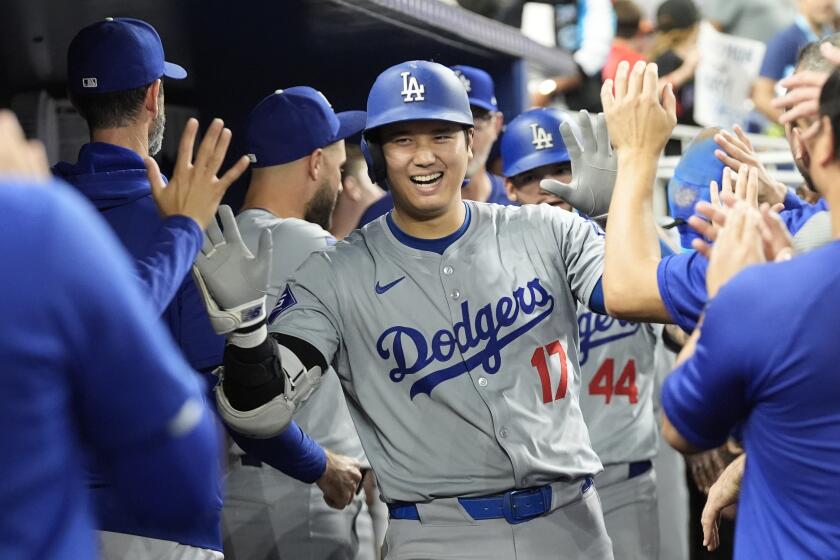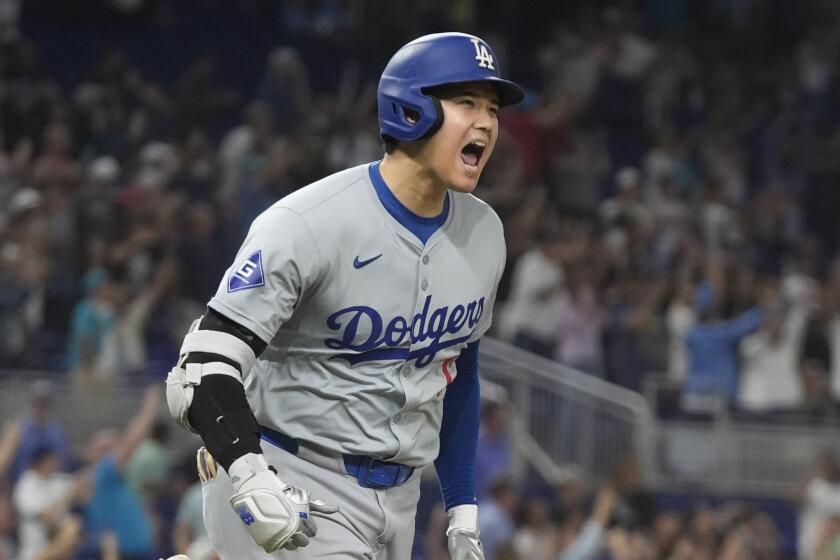A big year for U.S. women’s soccer, and hopes for more in 2012
Coach Pia Sundhage gets stopped in airports and recognized while on her morning runs.
Goalkeeper Hope Solo threw out the first pitch at a Chicago Cubs game and competed on “Dancing With the Stars.” And six other members of the U.S. women’s soccer team — a group that captured the nation’s imagination and was the runner-up in the Women’s World Cup this summer in Germany — were invited to the White House to play soccer with first lady Michelle Obama.
Women’s soccer hasn’t been this hot in the U.S. since Brandi Chastain put her jersey back on.
Yet in the what-have-you-done-for-me-lately world of American sports, it’s what the national team does for an encore in the Olympic Games next summer in London that will determine how long the public’s love affair with it will last. And it could go a long way toward determining the sport’s long-term growth prospects as well.
“It’s really easy to kind of rest on your laurels when you’ve had an experience like the World Cup. But we didn’t win,” said forward Abby Wambach, one of three finalists for the FIFA women’s player-of-the-year award and the first soccer player — male or female — to be voted the Associated Press’ athlete of the year. “So it makes people want to work that much harder.
“If we can bring home the gold, we’re going to give this sport another platform to continue to grow.”
Before we look ahead to next summer, let’s take one more look back at the last one, when, during an eight-day period in mid-July, the U.S. women played two of the most exciting matches in international soccer history.
First, the short-handed Americans beat Brazil on penalty kicks in the World Cup quarterfinals, narrowly avoiding elimination when Wambach’s header — one of four goals she scored in the tournament — tied the match with seconds left in overtime.
Then, in a final that was just as long and nearly as stirring, the U.S. and Japan traded goals in overtime before Japan triumphed on penalty kicks.
The results of both games led newscasts and stopped baseball games. Fans packed bars to watch the final, which drew the largest TV audience in U.S. history for a women’s match played outside the U.S.
“We came back and Times Square was just full of fans for us,” midfielder Heather O’Reilly said. “We did a circuit of talk shows and it was just really cool to see those clips of the bars just exploding. We could really, truly see the impact that we made.
“It didn’t really matter if it was women’s soccer, men’s soccer. The sport was enhanced and that was really cool. [But] the challenge is to stay in that sports fan’s conscious. We can’t just be that Brazil game and then forget about us.”
That brings us back to next summer — and the run-up begins next week when the U.S. team gathers at the Home Depot Center for its final training camp ahead of the Olympic qualifying tournament at Vancouver, Canada, in late January. The U.S. must finish in the top two in its group, which includes the Dominican Republic, Mexico and Guatemala, to advance to the semifinals, where it must win again to reach the final and clinch a berth in the London Games.
None of that should be a problem. Sundhage said if you liked the World Cup, you’ll love the year ahead even more.
“The journey has been absolutely wonderful. Exciting. And I think we improved our game tremendously. It will be even better going forward,” said the coach, who has lost five of 82 matches since taking over the U.S. program in 2007.
How long the U.S., ranked No. 1 in the world by FIFA, can continue improving is uncertain. The Americans have long been the dominant power in women’s soccer, winning two of the first three World Cups and three Olympic gold medals in four tournaments, finishing second the other time.
On the plus side, 15 of the 31 players Sundhage invited to training camp are younger than 26, which would appear to bode well for the future.
On the negative side is the plight of the Women’s Professional Soccer league, which was expected to play an important role in keeping the talent pipeline flowing, yet continues to struggle for funding and credibility three seasons after its founding. Last month, it needed a waiver from U.S. Soccer’s Board of Governors to remain a Division I league after the Florida-based magicJack franchise was disbanded because of ownership problems. That left WPS with five teams, three fewer than required for Division I status.
“There’s a place for women’s professional soccer here in America,” said Solo, who played alongside Wambach with the magicJack team. “[But] the equation has to work out. You have to have the right investors … the right people to run a league.
“Unfortunately, we don’t have that.”
O’Reilly is more hopeful, thinking that another successful summer for the U.S. women’s team will help make WPS not just necessary, but also relevant.
“It’s very crucial, very important for the growth of the game,” she said of a women’s professional league. “It’s a great product, as you saw this summer. People do love this game and they love the way that the women can play.
“It’s just about getting people to buy tickets.”
More to Read
Go beyond the scoreboard
Get the latest on L.A.'s teams in the daily Sports Report newsletter.
You may occasionally receive promotional content from the Los Angeles Times.











